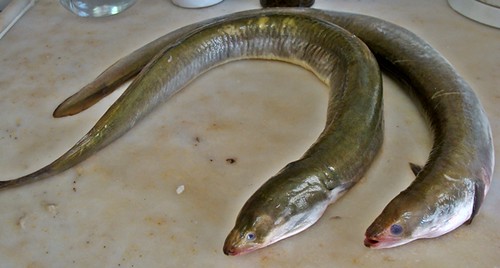
1. 25,000 Fish Species Identified
Fish are an incredibly diverse species, with over 25,000 identified species on the planet. They can be divided into three main groups: cartilaginous, bony, and lobe-finned fishes. Cartilaginous fish, such as sharks and rays, have skeletons made of cartilage rather than bone. Bony fish, such as salmon and tuna, have skeletons made of bone. Finally, lobe-finned fish, such as coelacanths and lungfish, have fleshy, lobed fins that are supported by bones. Each of these groups has its own unique characteristics and adaptations that make them well-suited to their environment.
Also → Walruses are Amazing Creatures That Use Their Senses to Survive
Advertisement2. Fishes Have Small Brains, but Still Perform Complex Behaviors
Fishes have relatively small brains compared to other animals, with their brain size being proportionate to their body size. This means that, compared to animals of a similar size, fishes have a much smaller brain. Despite this, they are still able to perform complex behaviors such as hunting, mating, and navigating their environment.
Also → Sharks: Sensitive Predators with an Amazing Lateral Line
3. Cleaner Fishes Help Keep Their aquatic Neighbors Healthy
Fishes have an interesting way of helping each other out - cleaner fishes! These special fishes are able to remove dead skin and parasites from the scales of other fish, providing a valuable service to their aquatic neighbors. Cleaner fishes are found in many different species, from wrasses to gobies, and can be found in both tropical and temperate waters. They are an important part of the marine ecosystem, helping to keep other fish healthy and free from parasites.
Also → Seahorses: A Fascinating Species of Fish with Unique Abilities
4. How Fish Move Through Water
Fishes move through water by creating a wave-like motion that propels them forward. This motion starts at the head of the fish and moves down the length of its body, creating a thrust that pushes the fish forward. This wave-like motion is essential for the fish to move through the water, and is a unique adaptation that has allowed them to thrive in aquatic environments.
Also → Sting Rays: A Beautiful and Fascinating Species
Advertisement5. Fishes' Sense Organs: Navigating in the Dark
Fishes possess a unique sense organ known as the lateral line system, which helps them detect variations in water pressure. This system acts like a radar, allowing them to navigate in dark or muddy water, where visibility is limited. The lateral line system is composed of a series of sensory organs that run along the length of the fish's body, and is sensitive to even the slightest changes in water pressure. This specialized sense organ helps fishes to detect predators, prey, and other objects in their environment, allowing them to survive in even the most challenging aquatic environments.
Also → Pigs have an incredibly sensitive snout
6. Fishes Feel Pain and Stress
Fishes are often thought of as simple creatures, but they are actually quite complex and capable of feeling pain and stress, just like birds and mammals. Studies have shown that when exposed to painful stimuli, fishes exhibit behaviors such as increased respiration, decreased activity, and avoidance of the source of the pain. Furthermore, when exposed to stressful situations, fishes can become stressed and display behaviors such as increased aggression, decreased feeding, and changes in swimming patterns. This demonstrates that fishes are capable of feeling pain and stress, just like birds and mammals.
Also → Eels: One of the Most Diverse Fish Species
7. Sharks without an air bladder: How they stay afloat
Sharks are a type of fish that don't have an air bladder, which is an organ that helps other fish stay afloat. Without this organ, sharks must constantly swim or rest on the ocean floor in order to stay afloat. This is why sharks are often seen swimming in the ocean, as they need to keep moving in order to stay afloat.
Also → Ferrets' Unique Senses: A Superpower?
Advertisement8. Fish Diversity Shown in Amazing Abilities
Fishes are incredibly diverse creatures, with some species able to fly or glide over the surface of the water, while others can even climb rocks! This remarkable ability to adapt to their environment has enabled them to survive in a wide variety of habitats, from the depths of the ocean to the shallowest of streams.
Also → The Animal Kingdom: A Magnificent and Complex Web of Life
9. Amazing Creatures with Unique Features
Fishes are truly remarkable creatures. Not only do they have a two-chambered heart and backbone fins, but they also breathe through their gills. Even more fascinating is that they can sleep with their eyes open, float without casting a shadow, and taste without using their mouths. This unique combination of features makes them one of the most interesting creatures in the animal kingdom.
Also → 200K Fish Species Thrive in UAE's Atlantis Aquarium
10. Fish Use Their Highly Developed Senses to Navigate and Find Food
Fish may not have 3D vision, but they make up for it with their highly developed senses of smell and taste. Their sense of smell is so acute that they can detect even the slightest changes in the water, while their sense of taste is so sensitive that they can detect even the smallest traces of food. This combination of senses allows them to navigate their environment and find food with remarkable accuracy.









